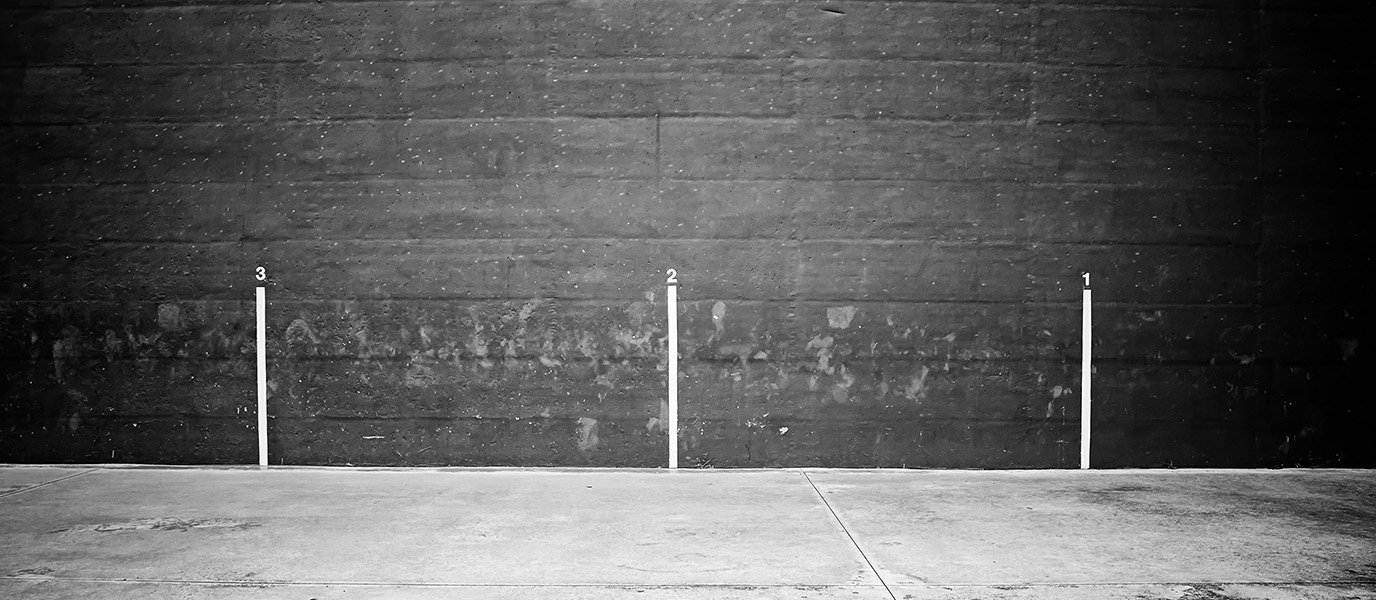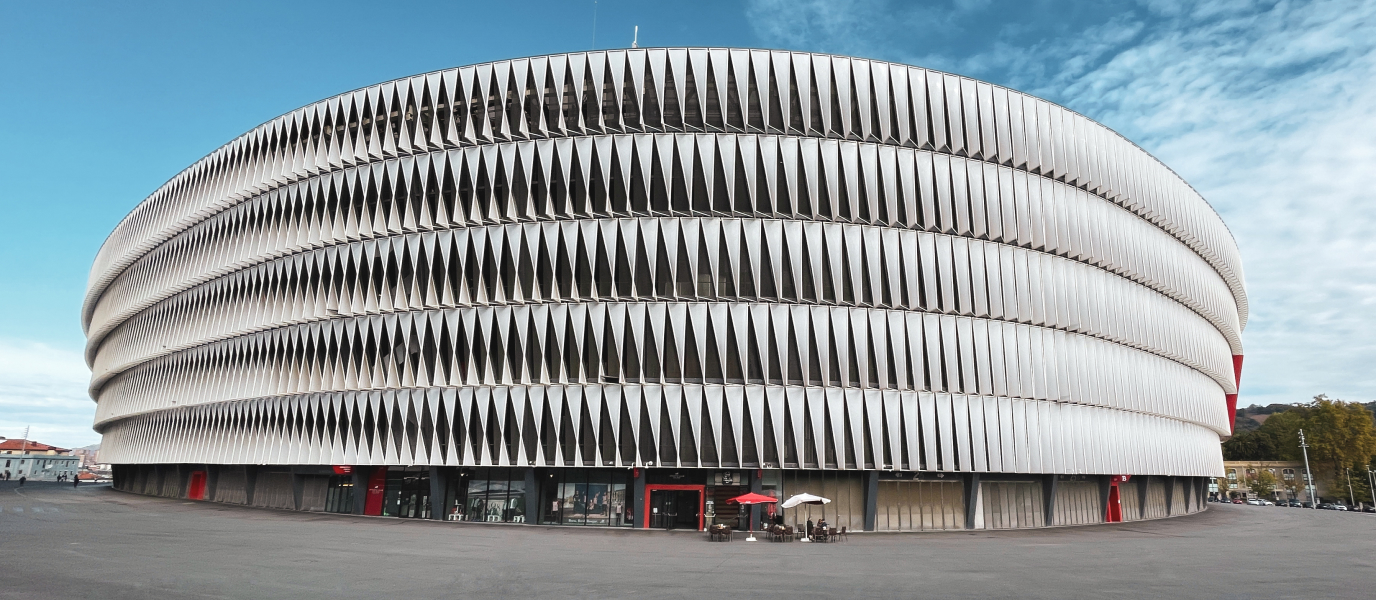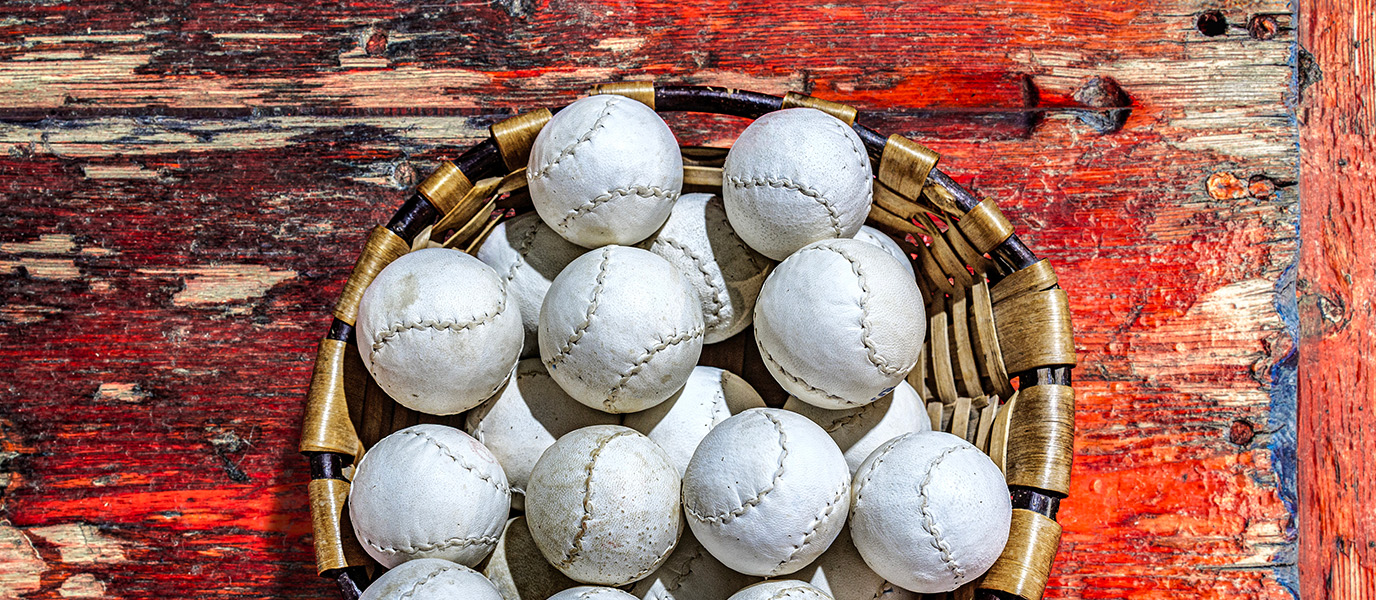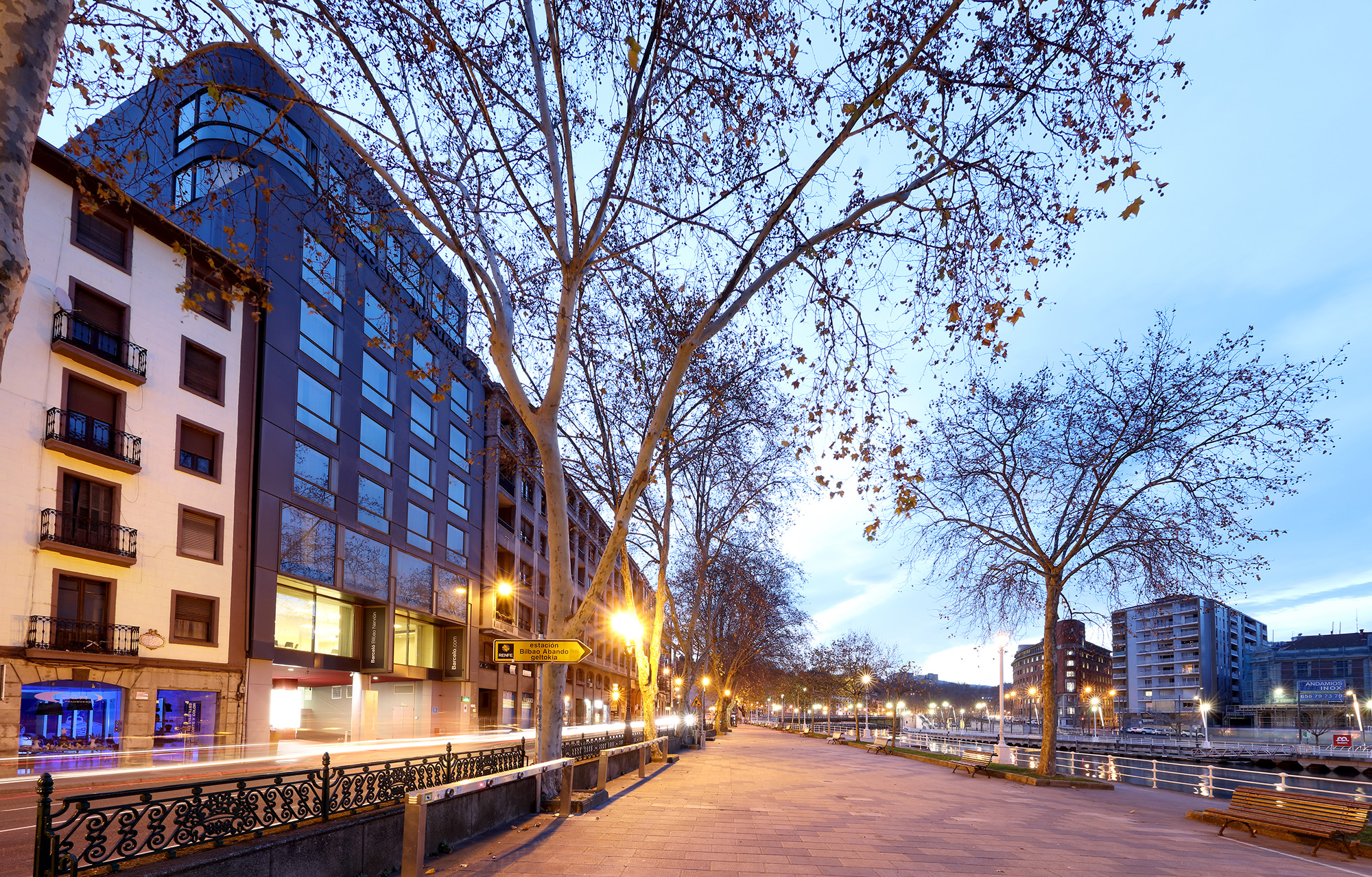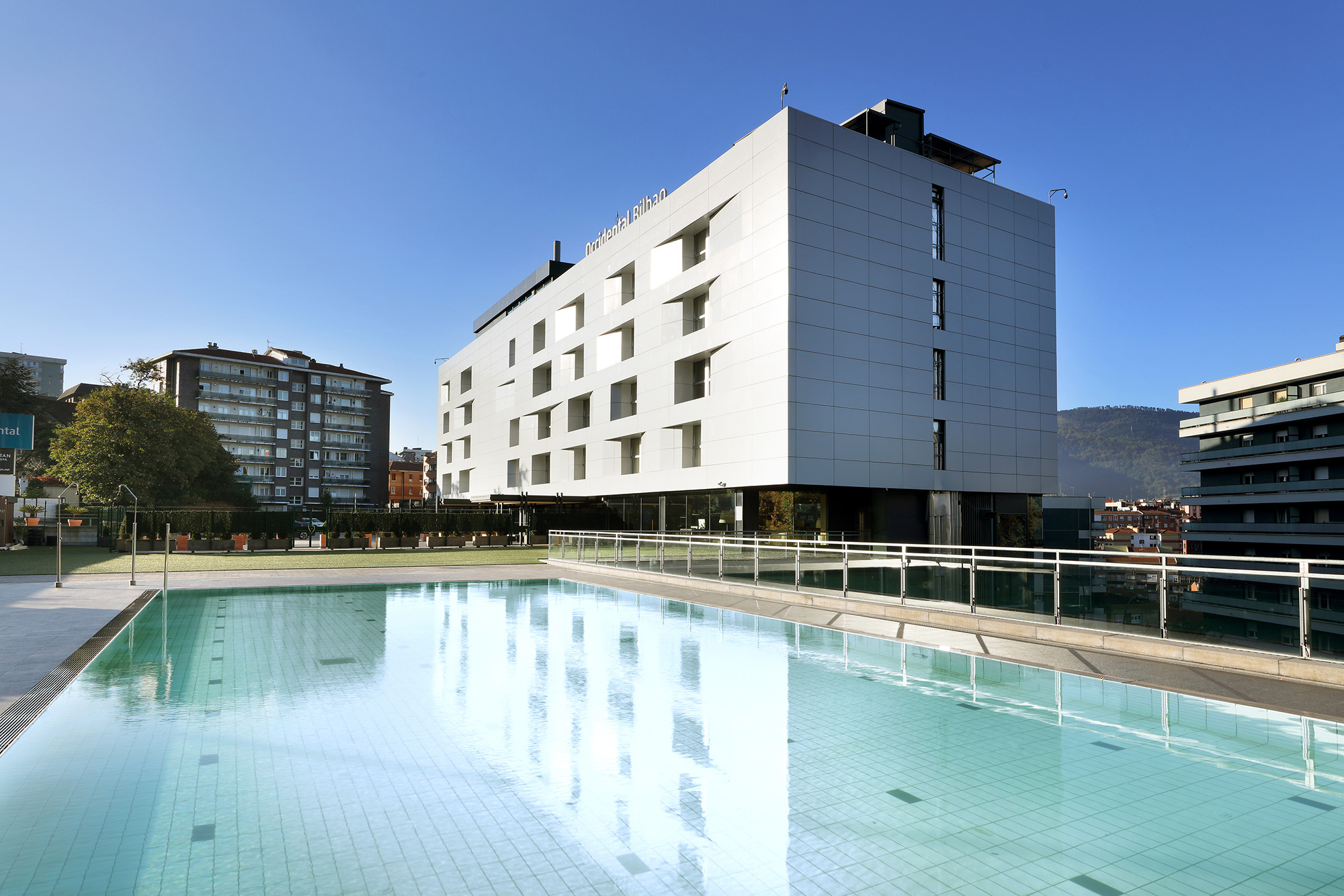It is often said that the best way to get to know a place is by going to events and participating in activities that reveal its true essence. For the same reason that many basketball fans try to catch an NBA game whenever they travel to America, you should consider attending a Basque pelota match during your time in Bilbao. It’s worth buying a ticket just to visit the spectacular Frontón Bizkaia venue.
This article will tell you all you need to know about this fascinating venue, mention some of the most popular Basque sports and tell you how to go on a guided tour of the Frontón Bizkaia.
- The imposing Frontón Bizkaia
- Traditional Basque sports
- Inside and outside the Frontón Bizkaia
- Which sports can I watch and when?
The imposing Frontón Bizkaia
Inaugurated on 19 March 2011, the Frontón Bizkaia venue is located in Bilbao’s Miribilla district, just a stone’s throw from the Bilbao Arena. This surprising building is home to the largest Basque pelota venue in the autonomous community, with a capacity for 3,000 seated spectators. The stands are divided into four areas: court-side (side and back); a first tier (where the VIP seats are located); and a third and fourth tier, also with side and back seats. The back wall, known as the rebote, is made of glass. In total, the court has seven VIP areas.
While the lines and colours of the court are what will get your attention at first, you will be truly captivated by the sound that is generated in the exciting moments. In addition to the main court, there are also warm-up courts, press rooms, changing rooms, bathrooms, storage facilities, a cloakroom and hospitality spaces.
The Frontón Bizkaia also houses a trinkete court (a closed Basque pelota court without a contracancha courtside space and with a double side wall), with a capacity for 406 spectators. It also houses the 7,000 m2 Kirol Etxea (House of Sports), which is home to the Basque Country’s sporting federations. As you can see, design and functionality are not mutually exclusive at this iconic venue.
Traditional Basque sports
If you’ve visited the Basque Country before, you’ll have seen that there are public-use Basque pelota frontones in almost every municipality, regardless of how small they are. For many centuries, local town and city councils have been responsible for keeping these courts in good conditions so that local residents can use them.
Basque pelota consists of striking a ball with the hand (or a wicker basket, known locally as a cesta) into a large wall with as much accuracy and technique as possible. This sport can be played in singles or doubles format. There are three court types: frontón corto, plaza libre and the aforementioned trinkete.
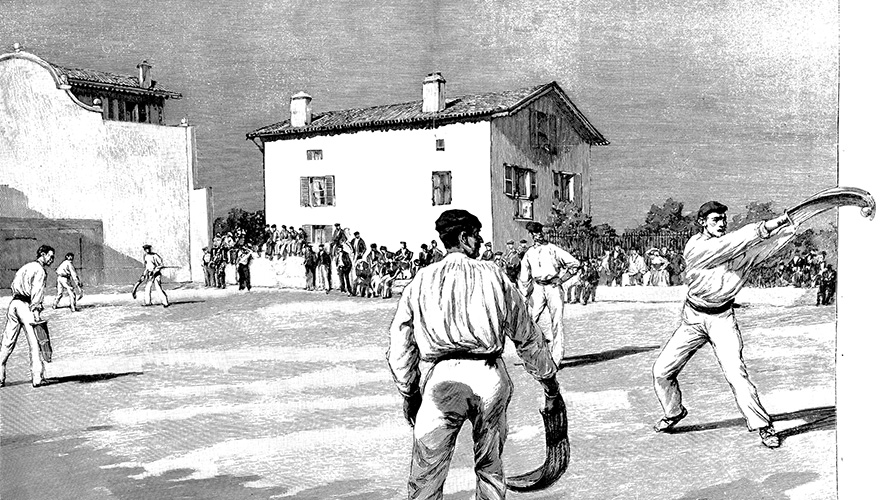
One of the most popular rural sports in the Basque Country is known as Aizkora, in which the aizkolaris, or log cutters, compete against each other. In this sport, the aizkolaris stand on top of a thick, horizontal log and hack at it with an axe. The winner is determined by the number of logs cut within a given time period, or by the number of strikes needed to chop a single log in half.
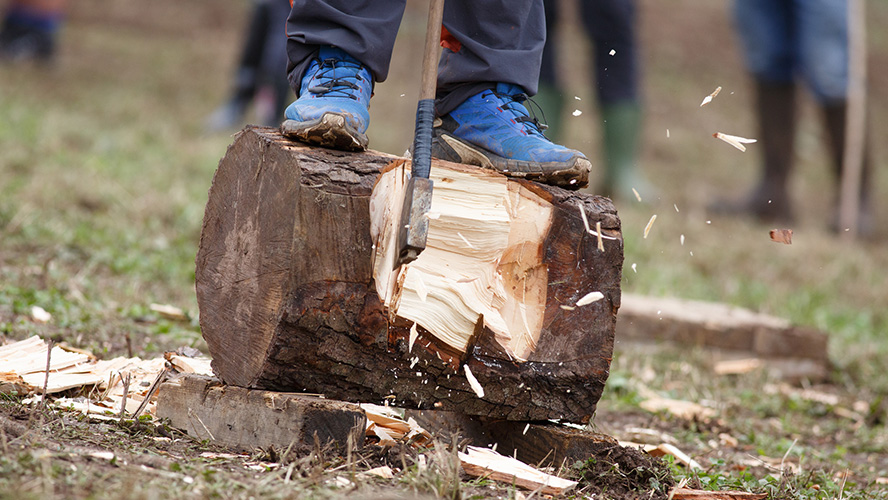
No less spectacular is harrijasotze, or boulder lifting. There are also several variations of this rural sport, including trying to lift the heaviest boulder possible or trying to lift the same boulder as many times as possible within a given time limit.
The Basque Country also has a sport than resembles the classic tug-of-war. This is sokatira, in which two teams of eight competitors try to demonstrate their collective strength. The teams usually switch sides at the half-way point to make sure that no team can gain an unfair advantage due to the underlying ground conditions.
Lastly, we must mention the popular trainera rowing regattas. In the early days, competitors raced in the traineras that were used by local fishermen. However, more modern rowboats are now used in this discipline. Each trainera has 13 rowers and a skipper, who steers the rudder while standing at the stern and facing the bow. A professional trainera racing league is held every summer, so you may be able to catch a live race if you visit the Basque Country during these warmer months.
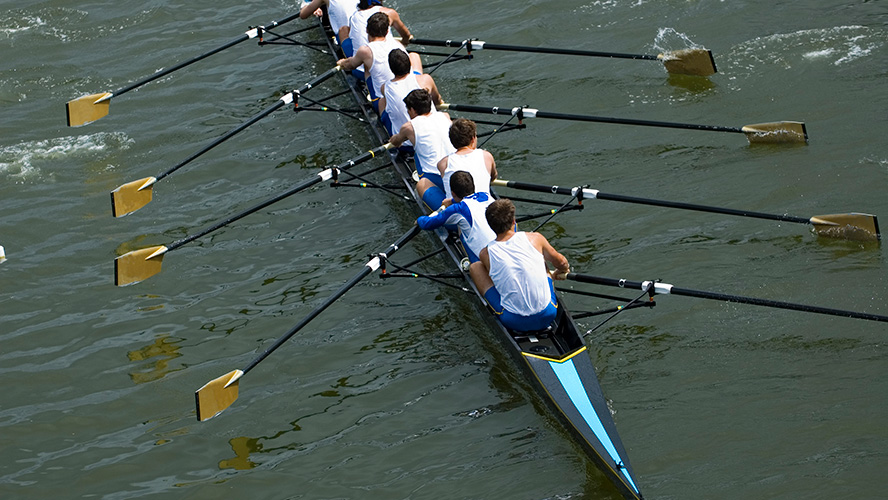
Frontón Bizkaia from inside and outside
The Frontón Bizkaia project was executed by a team of three architects (Francisco Javier Gastón Ortiz, David Gastón Robles and Marcelo Ruiz Pardo) and two building engineers (Juan Luis Urresti Gorostizaga and Ana B. Montes Sastre). The construction was designed as a parallelepiped: a single, compact structure reminiscent of a geometric Lego piece. The colour of the slate cladding on the outside of the building adds even more solemnity to the structure and complements the court’s inner walls.
The inside of the Frontón Bizkaia is no less striking. It is an almost diaphanous space that is dissected by diagonal lines and notable for its sloping stands. The space includes competition, seating and passage areas. The spectator is unquestionably one of the main beneficiaries of this modern project.
Which sports can I watch and when?
The Frontón Bizkaia hosts two formats of professional Basque pelota: hand and racket. It is possible to attend league fixtures or Bizkaia tournaments (hand and racket formats), which culminate in semi-finals and a final. There are also amateur Basque pelota competitions, such as the Torneo Internacional de Pelota Aficionada, two trinkete tournaments and a women’s tournament. There’s no need to queue up at the ticket office, as you can purchase on the venue’s official website. If you’d like to take a guided tour of the facilities, you can do so for €1.50 on the last Friday of the month, with the tour beginning at 12pm.
If you play Basque pelota, you might like to know that you can rent the full court or the trinkete court for a full day, half-day or for a set number of hours.
























































